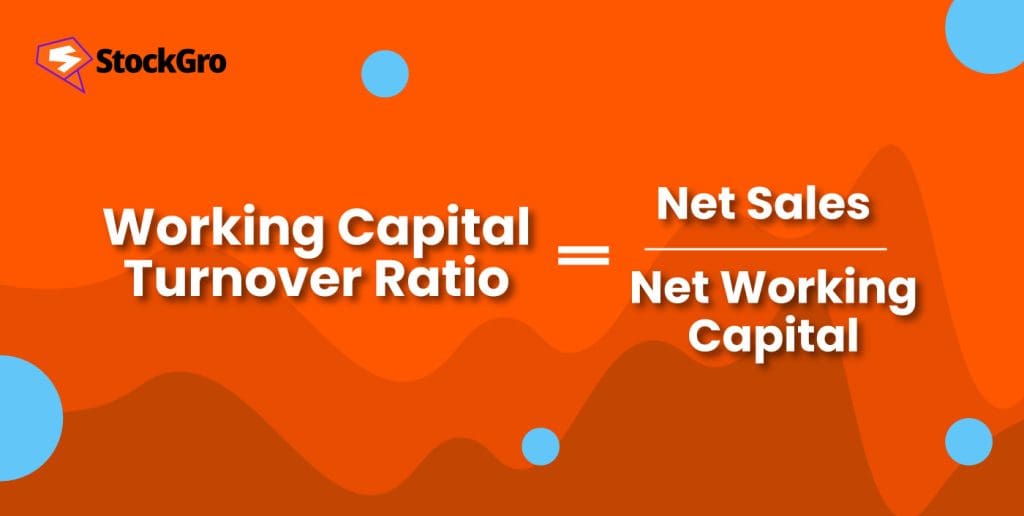
Efficiency is the key that can lead businesses to stand out in this fierce competition. Entrepreneurs are continually striving for streamlined operations and increased profitability. One important financial metric that tells us about this is the working capital turnover ratio.
The company’s daily activities could be affected if this efficiency ratio goes unnoticed. Thus, if business owners understand this metric, they can reduce production bottlenecks and maintain liquidity.
Let’s grasp this ratio, its formula and how to interpret it.
What and why of working capital turnover ratio
By referring to the meaning of the working capital turnover ratio, we mean what is the link between working capital and net sales.
This ratio tells us how effectively a business uses its working capital to produce revenue/sales and contribute to its growth. Here, working capital = current assets minus current liabilities.
A high ratio interpretation means a firm maximises sales by using its working capital. On the other hand, a low one might indicate issues with current asset and current liabilities management.
Now it’s clear what is working capital turnover ratio.
Working capital turnover ratio: Formula
How will companies calculate this ratio?
Here’s how to calculate the working capital turnover ratio:
Working capital turnover ratio formula = Net sales/Average working capital
In this formula,
Net sales represent the true picture of a company’s revenue. It is computed by taking the total revenue/sales and subtracting any discounts, allowances and returns received. You can find net sales/revenue on the income statement.
Working capital simply equals current assets minus current liabilities; these figures appear on the balance sheet of any company. As working capital fluctuates, an average value is used in the formula. To calculate it – you can take the average of the beginning and ending working capital for the period under consideration.
Also read: Working capital – the what, how, and why of business lifelines
Example: Working capital turnover ratio
To see how the calculation of the working capital turnover ratio works – let’s take a hypothetical company (ABC).
Here is the financial data:
- Net sales: ₹50,00,000.
- Beginning working capital: ₹10,00,000
- Ending working capital: ₹20,00,000
Let’s first calculate the average working capital.
Average working capital = (10,00,000+20,00,000)/2 = 15,00,000
Working capital turnover ratio = 50,00,000/15,00,000 = 3.33
This means the company generated ₹3.33 in sales for every rupee of working capital during the fiscal year.
Must read: The financial lifeline: Understanding working capital management
Working capital turnover ratio: Interpretation
The working capital turnover ratio reveals a company’s ability to utilise its working capital effectively. A high ratio means that the company is very good at making sales without keeping too much inventory or acquiring the current liabilities that are not necessary. This result is reduced cash conversion cycles, higher liquidity, and quite possibly increased profitability.
Nevertheless, an exceedingly high proportion may as well be a red card. It may appear that the company is lowering its average inventory balance and stretching payable terms in favour of an artificially inflated ratio.
Contrarily, a low working capital turnover originally means inefficiency: this may be because of:
Excessive inventory: The problem of carrying too much inventory is the fact that such items first need cash, which could be utilised somewhere else in business. So it leads to a decrease in the company’s profit.
Ineffective credit collection: A company that delays in collecting payments from customers could end up with large accounts receivable, resulting in a lower working capital turnover ratio.
Poor inventory management: Unproductive stock control methods can result in excessive or insufficient stock, which has negative implications for the ratio.
There is no ideal working capital turnover ratio – as it differs from sector to sector. Yet, many experts believe that a ratio of 1.5 to 2 is good.
You may also like: Financial analysis essentials: A guide to activity ratios
Conclusion
The working capital turnover ratio is undoubtedly an essential metric to figure out how a company manages the working capital in the production of its economic activity – which is called revenue. If the ratio is judged along with other financial indicators and industry-wide marks, a company’s fiscal condition could be understood.
Keep in mind that setting a working capital ratio that perches on the healthy line in your industry will guarantee efficiency and the financial safety of your business.
FAQs
1. How to interpret the working capital turnover ratio?
The working capital turnover ratio reveals a company’s ability to utilise its working capital effectively. A high ratio means that the company is very good at making sales without keeping too much inventory or acquiring the current liabilities that are not necessary.
Contrarily, a low working capital turnover originally means inefficiency: this may be because of excessive inventory, ineffective credit collection and poor inventory management.
2. What is the working capital ratio formula and interpretation?
Working capital turnover ratio formula = Net sales/Average working capital
In this formula, net sales represent the true picture of a company’s revenue minus any discounts or allowances. This figure is readily available on the income statement.
Working capital simply equals current assets minus current liabilities; these figures appear on the balance sheet of any company. To calculate it – you can take the average of the beginning and ending working capital for the period under consideration.
3. What if the working capital turnover ratio is negative?
If a company’s or firm’s current liabilities exceed that of its current assets – a situation of negative working capital happens. This shows that a business owner will have to pay more for its short-term obligations than what it has in terms of its assets.
Though no business owner or company wants to enter into such a situation where its day-to-day operations will suffer – it’s not a risky situation. Therefore, you must carefully analyse before making a decision.
4. How to improve the working capital turnover ratio?
Towards enhancing the working capital turnover ratio of a business – you need to focus on two areas: speeding up sales collection and tightening inventory control.
Get payments from customers in a shorter time by giving discounts for payments in advance or by making tighter credit terms. Minimise stocks by including just-in-time ordering or using sales data in better forecasting. It helps to free the cash that is stuck in receivables and stock, thereby increasing your ratio.
5. What is a good net working capital turnover ratio?
A high working capital turnover ratio means that the company is very good at making sales without keeping too much inventory or acquiring current liabilities that are not necessary.
Contrarily, a low ratio originally means inefficiency: this may be because of excessive inventory or ineffective credit collection. However, there is no ideal working capital turnover ratio – as it differs from industry to industry. Yet, many experts believe that a ratio of 1.5 to 2 is good.

